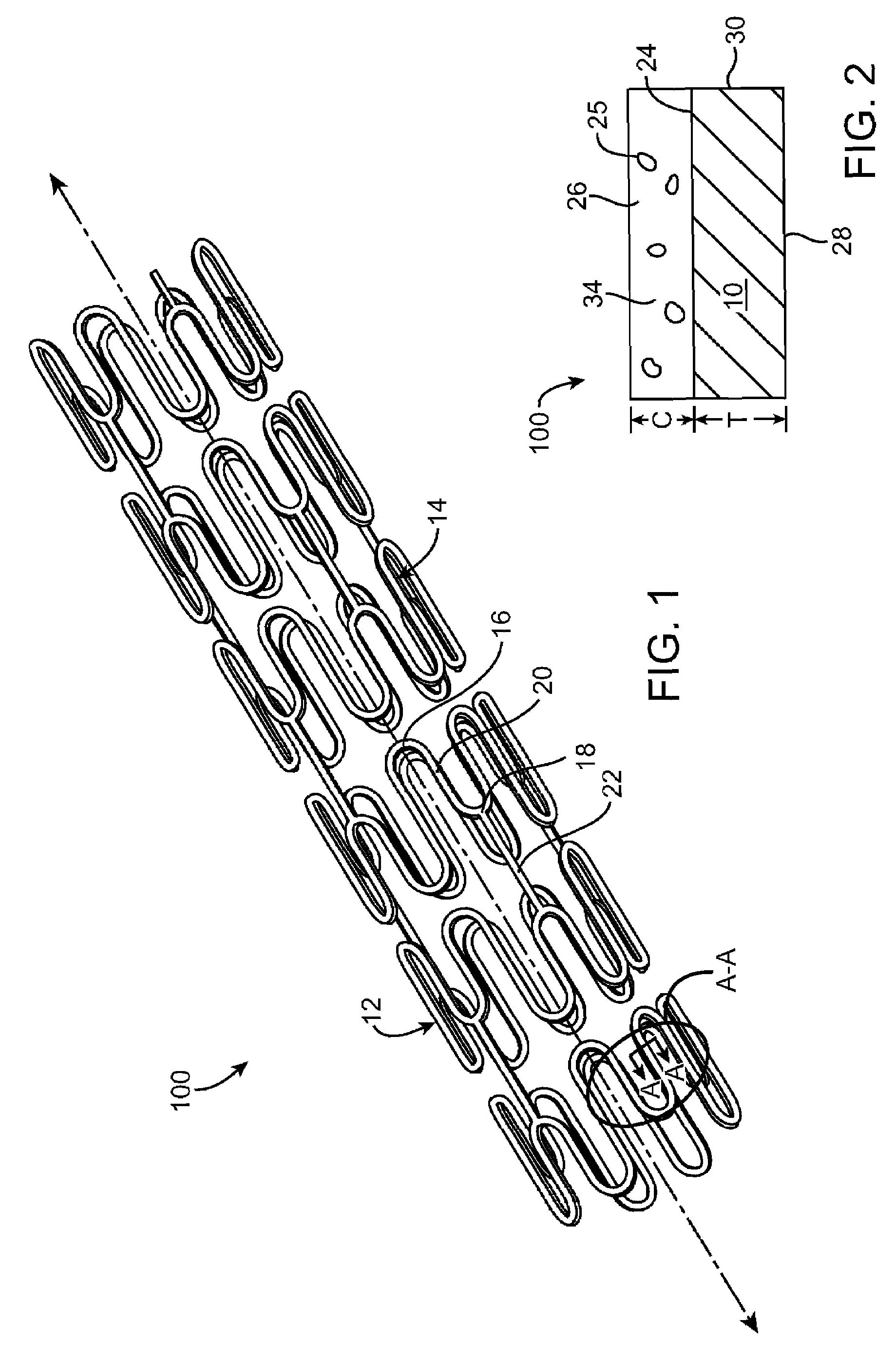Bioresorbable stent
a bioresorbable, stent technology, applied in the field of temporary endoluminal prosthesis, can solve the problems of irritating the surrounding tissue, affecting the electrical potential of the stent, and affecting the ability of the stent to be resuscitated, so as to achieve the effect of higher electrical potential
- Summary
- Abstract
- Description
- Claims
- Application Information
AI Technical Summary
Benefits of technology
Problems solved by technology
Method used
Image
Examples
Embodiment Construction
[0013]An embodiment of the present invention includes a bioresorbable stent that utilizes a metal impregnated polymeric coating to control degradation and bioresorption of a metallic substrate of the stent. A stent that is “bioresorbable” is one that will gradual breakdown and disperse in the circulation and thereby be removed from supporting, or otherwise residing in, a body lumen. In an embodiment, the stent substrate or framework is formed into its desired shape from a tube, sheet or wire of a first metallic material, wherein the first metallic material possesses the requisite mechanical properties for forming a stent that is deliverable and implantable within a body lumen. The first metallic material is also selected to be an “active” material, which is a material that has a lower or negative electrical potential relative to a standard reference electrode, such as a saturated calomel electrode (SCE).
[0014]The “active” stent substrate is then coated with a biodegradable polymer t...
PUM
 Login to View More
Login to View More Abstract
Description
Claims
Application Information
 Login to View More
Login to View More - Generate Ideas
- Intellectual Property
- Life Sciences
- Materials
- Tech Scout
- Unparalleled Data Quality
- Higher Quality Content
- 60% Fewer Hallucinations
Browse by: Latest US Patents, China's latest patents, Technical Efficacy Thesaurus, Application Domain, Technology Topic, Popular Technical Reports.
© 2025 PatSnap. All rights reserved.Legal|Privacy policy|Modern Slavery Act Transparency Statement|Sitemap|About US| Contact US: help@patsnap.com


